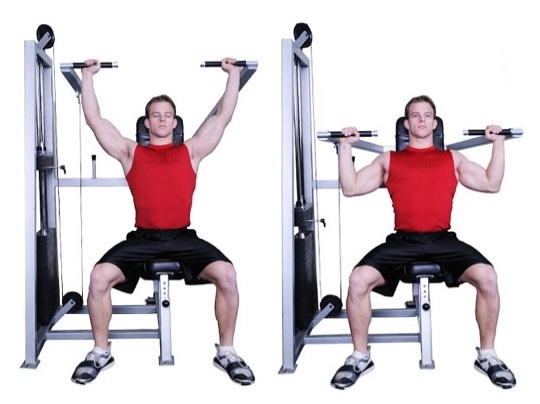Introduction to Shoulder Press Machines
Are you looking to build strength and definition in your shoulders? The shoulder press machine might just be the game-changer you need. This piece of gym equipment is designed specifically for targeting those upper body muscles, allowing you to safely push your limits and achieve impressive results. Whether you’re a seasoned weightlifter or just starting out, understanding how to use this machine can enhance your workout routine significantly. Join us as we dive deeper into the mechanics, benefits, and best practices for incorporating the shoulder press machine into your fitness regimen. Get ready to elevate your training!
The Mechanics of Shoulder Press Exercises
The shoulder press exercise primarily involves lifting weight overhead, which engages multiple muscle groups. When using a shoulder press machine, you can isolate the shoulders more effectively compared to free weights.
As you grip the handles and adjust your seat, ensure that your back is supported. The movement starts with arms bent at 90 degrees. As you push upward, focus on engaging your deltoids—the front muscles of the shoulders—as well as activating your triceps.
Proper form is crucial for maximizing benefits while minimizing injury risk. Keep your core tight throughout the lift to maintain stability. This controlled motion helps prevent excessive strain on joints and ligaments.
Common mistakes include arching the back or lifting too heavy too soon. Start with manageable weights to perfect your technique before increasing resistance. Understanding these mechanics enhances both safety and effectiveness in building upper body strength.
Muscle Groups Targeted by Shoulder Press Machines
Shoulder press machines are fantastic tools for targeting specific muscle groups in the upper body. Primarily, they focus on the deltoids, which are crucial for shoulder strength and stability. These muscles help with a wide range of overhead movements and contribute to overall shoulder aesthetics.
In addition to the deltoids, using a shoulder press machine also engages your triceps. This muscle group assists in extending the elbow joint during pressing motions, enhancing arm strength effectively.
The upper pectoral muscles receive some attention as well. While their primary role is not directly related to shoulder pressing, they play a supporting role in stabilization and movement.
Don’t overlook how core muscles activate while using this machine. Engaging your abs helps maintain proper posture throughout the exercise, allowing for better form and reducing injury risk.
Benefits of Using a Shoulder Press Machine
The shoulder press machine offers a host of advantages for anyone looking to enhance their upper body strength. It provides stability, allowing you to focus on lifting without the need to balance free weights. This is especially beneficial for beginners or those recovering from injuries.
Using this machine also promotes proper form. The guided motion helps reduce the risk of injury by ensuring your movements are controlled and aligned correctly. You can push yourself harder knowing that you’re supported throughout the range of motion.
Additionally, the shoulder press machine allows for adjustable weight settings, making it easy to tailor your workouts as you progress. Whether you’re aiming for endurance or pure strength, you can find an appropriate resistance level that suits your goals.
Moreover, incorporating this equipment into your routine can lead to muscle growth and improved athletic performance. Stronger shoulders contribute not just in isolation exercises but across various physical activities and sports as well.
Variations and Adjustments for Different Fitness Levels
Shoulder press machines are versatile, catering to various fitness levels. Beginners can start with lighter weights and focus on mastering form. This helps build confidence while minimizing the risk of injury.
As strength improves, individuals can gradually increase the weight or resistance. Many machines allow for modifications in seat height and back support, ensuring proper alignment during exercises.
Advanced users may want to explore unilateral options, where one arm works independently. This variation enhances core stability and promotes balanced muscle development.
Another adjustment is altering grip positions—using a neutral grip versus an overhand grip targets muscles differently. Experimenting with these variations keeps workouts fresh and engaging while maximizing results.
Safety Tips for Using a Shoulder Press Machine
When using a shoulder press machine, prioritizing safety is essential. First, always adjust the seat height to ensure your shoulders align with the machine’s pivot point. This alignment helps reduce strain on your joints.
Before starting your workout, check that all weights are securely fastened. Loose weights can lead to unexpected shifts during your exercise, increasing the risk of injury.
Start with lighter weights if you’re new to the shoulder press machine. Gradually increase resistance as you become more comfortable and confident in your form.
Maintain proper posture throughout each rep by keeping a straight back and engaged core. Avoid arching or leaning excessively; this can stress your lower back.
Never rush through repetitions. Focus on controlled movements for maximum effectiveness and safety while allowing adequate rest between sets.
Conclusion: Incorporating a Shoulder Press Machine into Your Workout Routine
Integrating a shoulder press machine into your workout routine can significantly enhance your strength training regimen. This versatile piece of equipment not only targets crucial muscle groups but also helps in developing overall upper body power.
Whether you’re a beginner or an experienced lifter, the shoulder press machine offers various adjustments to suit your fitness level. Its design promotes proper posture and alignment, ensuring you engage the right muscles while minimizing injury risk.
As you become comfortable with the basics, consider experimenting with different variations and weights to keep challenging yourself and avoid plateaus.
By making room for this effective exercise in your gym sessions, you’ll steadily improve your shoulder stability and performance in other lifts. Embrace the benefits it brings as part of a balanced approach to fitness that prioritizes both strength gains and safety.





